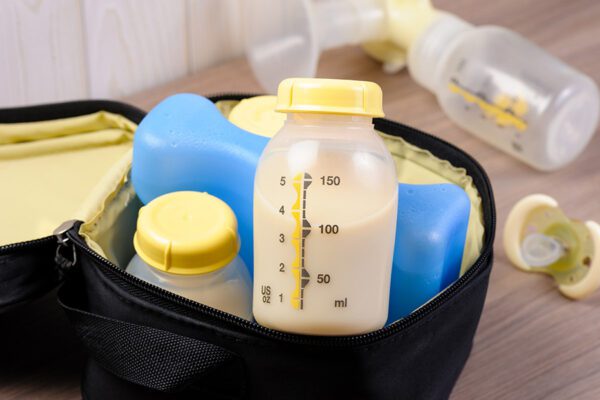Highlights
- FLSA Protections: Under the FLSA, most nursing employees have the right to reasonable break time and a place that is shielded from view to express breast milk while at work. This right is available for up to one year after a child’s birth.
- PUMP Act Expansions: The PUMP Act expands the FLSA’s existing protections and extends its coverage to include employees who are exempt from overtime.
On Dec. 29, 2022, the Providing Urgent Maternal Protections for Nursing Mothers (PUMP) Act expanded existing requirements under the Fair Labor Standards Act (FLSA) for employers to provide break time and a private place other than a bathroom for employees to express breast milk.
Under the PUMP Act, these requirements now apply to almost all FLSA-covered employees, including those who are exempt from FLSA overtime rules. The PUMP Act also clarifies that the required breaks to pump breast milk must be paid when employees are not completely relieved of all work duties. A hardship exemption from these new requirements is available for employers with fewer than 50 employees.
The U.S. Department of Labor (DOL), through its Wage and Hour Division (WHD), enforces most of the FLSA’s provisions and has issued a series of guidance documents with answers to frequently asked questions (FAQs) about how employers in certain industries must comply with the PUMP Act. This Compliance Bulletin provides a lightly edited version of the DOL’s FAQs on the PUMP Act for employers in the transportation industry.
Important Dates
- Dec. 29, 2022: The PUMP Act was enacted and went into effect. The PWFA, which requires reasonable accommodations for pregnancy and related conditions, was also signed into law.
- April 28, 2023: As of this date, employers may be sued for damages and other remedies under the PUMP Act.
Action Steps
Employers in the transportation industry should become familiar with all applicable requirements under the PUMP Act and with the DOL’s additional guidance for their specific industries.
In addition, all employers with 15 or more employees should ensure compliance with a related law, the Pregnant Workers Fairness Act (PWFA), that requires reasonable accommodations for individuals with limitations related to pregnancy, childbirth or related medical conditions.
FAQs on PUMP-at-Work Protections Under the FLSA in the Transportation Industry
Q: May an employer direct employees who operate motor vehicles to use fire stations or other businesses along their driving routes to pump breast milk?
Yes. The FLSA would not prohibit an employer from partnering with businesses along an employee’s transportation route to accommodate nursing employees. Employers are obligated under the law to ensure employees have space available to pump, even if they do not have a fixed work location. The space provided cannot be a bathroom, and it must be shielded from view and free from intrusion by co-workers and the public.
Q: I own a flatbed trucking company. Can my employee, a long-haul driver, use the sleeper berth of their truck to take pump breaks? The sleeper berth includes a bed large enough to sleep on, a bunk heater for cold weather, and cabinets for storing personal items.
Maybe. The FLSA requires that nursing employees have access to a place to pump breast milk at work that is shielded from view, free from intrusion from co-workers and the public, available each time it is needed by the employee, and not a bathroom. The location must be functional as a space for pumping. A space must contain a place for the nursing employee to sit and a flat surface, other than the floor, on which to place the pump.
Ideally, spaces to pump breast milk should also include access to electricity, allowing a nursing employee to plug in an electric pump rather than use a pump with battery power, which may require more time for pumping. Access to sinks near the space provided to pump so that an employee can wash their hands and clean attachments improves the functionality of the space and may reduce the amount of time nursing employees need to pump breast milk at work.
Q: Is a driver who is employed by a taxicab company covered under the FLSA PUMP-at-work requirements even if the employee is not entitled to overtime?
Yes. On Dec. 29, 2022, the PUMP Act amended the FLSA to extend the reasonable break time and space protections to many more employees who were not previously covered. Most employees have the right to take reasonable break time to express breast milk for their nursing child for one year after the child’s birth. Employees are covered by the FLSA PUMP-at-work requirements even if they are exempt from the FLSA overtime requirements.
Q: We have very few women working in our transportation company, and one of them has had male co-workers make jokes about her need to take pump breaks and interfere with her breaks by telling her to hurry up and come back to work. When she reported this to her supervisor, the supervisor told her to stop taking so many breaks. Since then, the female worker’s co-workers have continued to interfere with her breaks, and the supervisor has not done anything about it. What can this employee do?
Most of the laws enforced by the WHD have regulations that prohibit retaliation, harassment, intimidation or the taking of adverse action against employees for inquiring about their pay, hours of work or other rights; asserting their worker rights; filing a complaint about their worker rights; or cooperating with a WHD investigation. If an employee is experiencing harassment that is interfering with the right to pump at work, the employee may call or visit any WHD Office to ask about the laws or file a complaint.
In addition, the U.S. Equal Employment Opportunity Commission (EEOC) enforces federal laws that protect employees from harassment because of pregnancy, childbirth, or a medical condition related to pregnancy or childbirth or because of a pregnancy-related physical or mental disability, including Title VII of the Civil Rights Act, the PWFA and the Americans with Disabilities Act. More information about this is available on EEOC’s website on Pregnancy Discrimination and Pregnancy-Related Disability Discrimination.
Material posted on this website is for informational purposes only and does not constitute a legal opinion or medical advice. Contact your legal representative or medical professional for information specific to your legal or medical needs.




